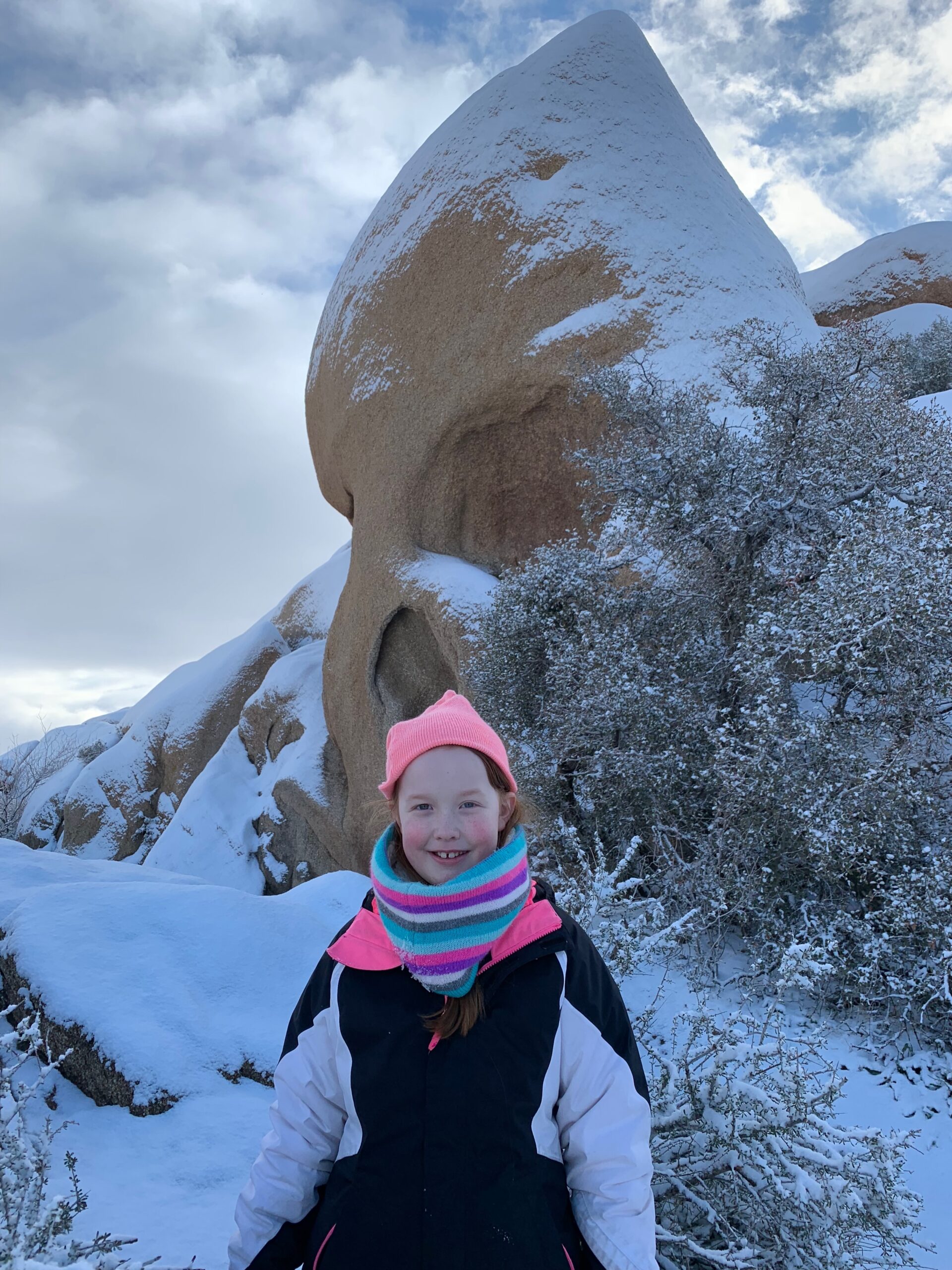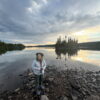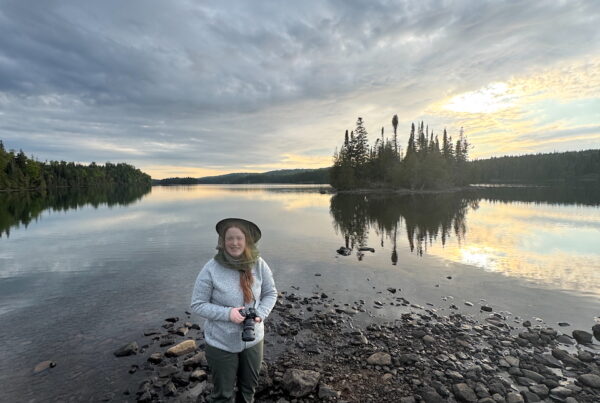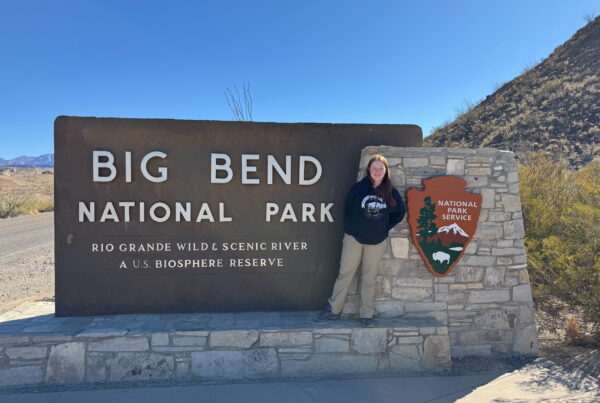Our second trip brought us to Joshua Tree National Park in Southeastern California. We made this excursion in late February of 2019 making the most of school vacation week. The parks had just re-opened after the government shutdown. We were nervous of the reports of damage to the park and happy to see very little signs of vandalism.

This was the fist time for both of us at Joshua Tree and while I did a fair bit of research I did not know what to expect.
For the logistics stuff, we stayed in in Twentynine Palms, this clearly seems the best place to stay if you want to explore the park. There are no hotels inside the park so camping would be the only option to get close. Twentynine Palms is a wonderful classic California town, full of nice hotels and good food. This is also where one of the parks visitors center is. The other is the Cottonwood Visitors Center inside the park.
I will say that the Country Kitchen in town makes one of the best breakfasts I’ve ever had. Samples may be a little skewed since we went hiking before dawn everyday and by the time we got back to town we where starving.
The town has most everything you could need and some cute little shops, restaurants, etc.
We flew into Las Angeles and made the two and half hour drive out to the park. You could also fly into Las Vegas its only an extra half hour.
Due to how close Joshua Tree is to Los Angeles it’s a very popular park. We came here in the off season hoping to have some space to ourselves. While not empty there was very little traffic, always easy to find parking and once out hiking we where almost always alone.
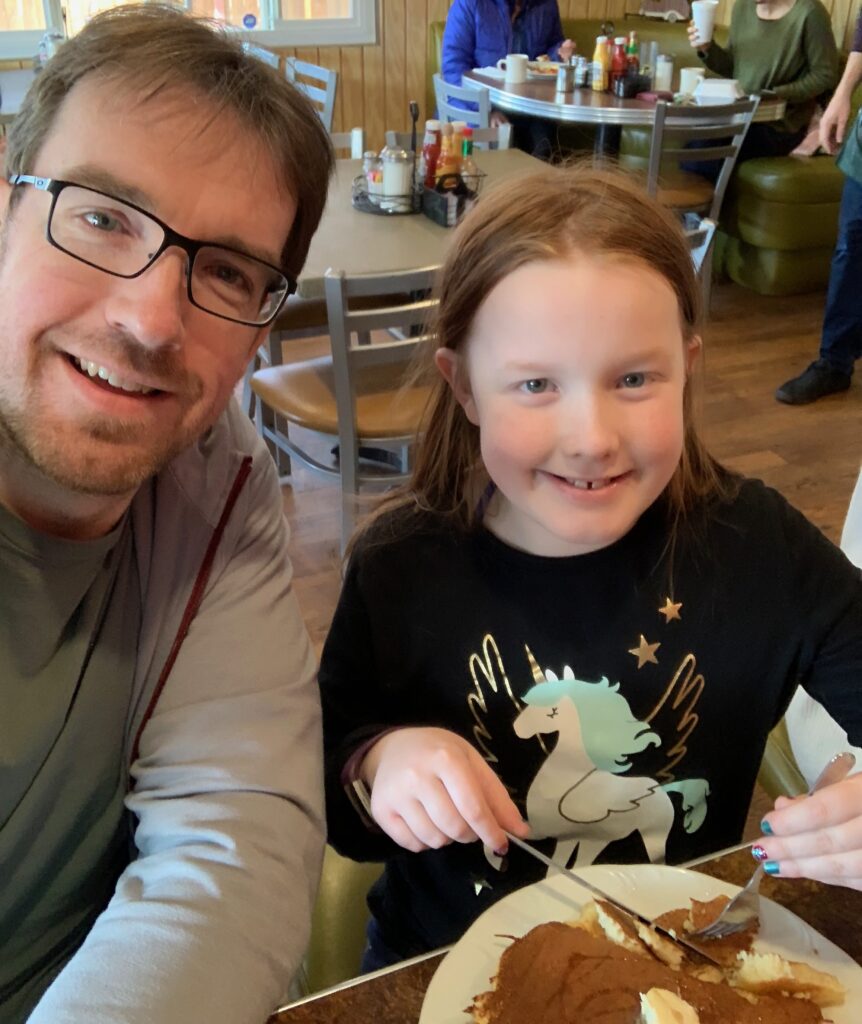
The park itself is amazingly large, around 1,235 sq. miles! It has two very distinct and different geographies and ecosystems. The northern section of the park is a higher elevation and is Mojave Desert, as you drive south (and literately drive downhill) it changes to the Colorado Desert. The Little San Bernardino Mountains traverse the southwest edge of the park.
The Mojave Desert is where we spent most of our time exploring; that’s where the Joshua trees are after all. This park is very different from other national parks in terms of photography. There are not many ‘main attractions’, there is no equivalent to Tunnel View (maybe a poor example, there is nothing in the world like Tunnel View). You have to drive, hike, walk, look and find your own pictures. This makes it both very fun and changeling to photograph.
The only time we ducked south to the Colorado Desert was to walk around the Cholla Cactus Garden right after sunrise. The is a worthwhile stop for anyone coming to the park. About an hour after the sun had peaked over the the mountains we where alone in the garden. The light in the early morning and late afternoon is amazing and worth waiting for.
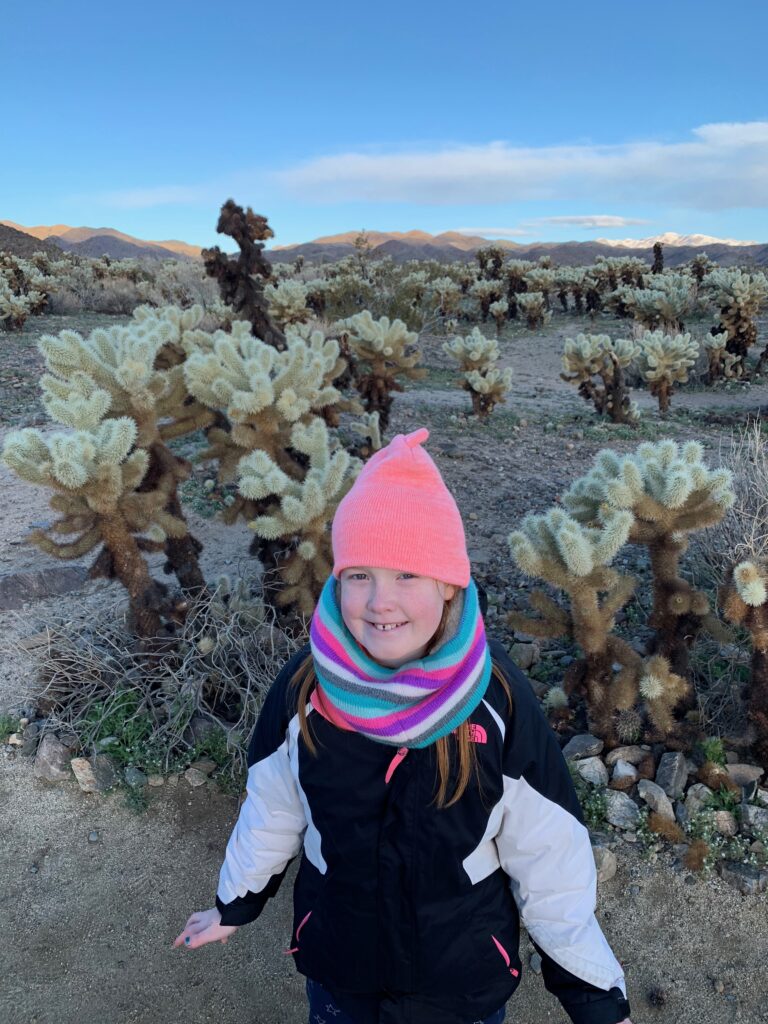


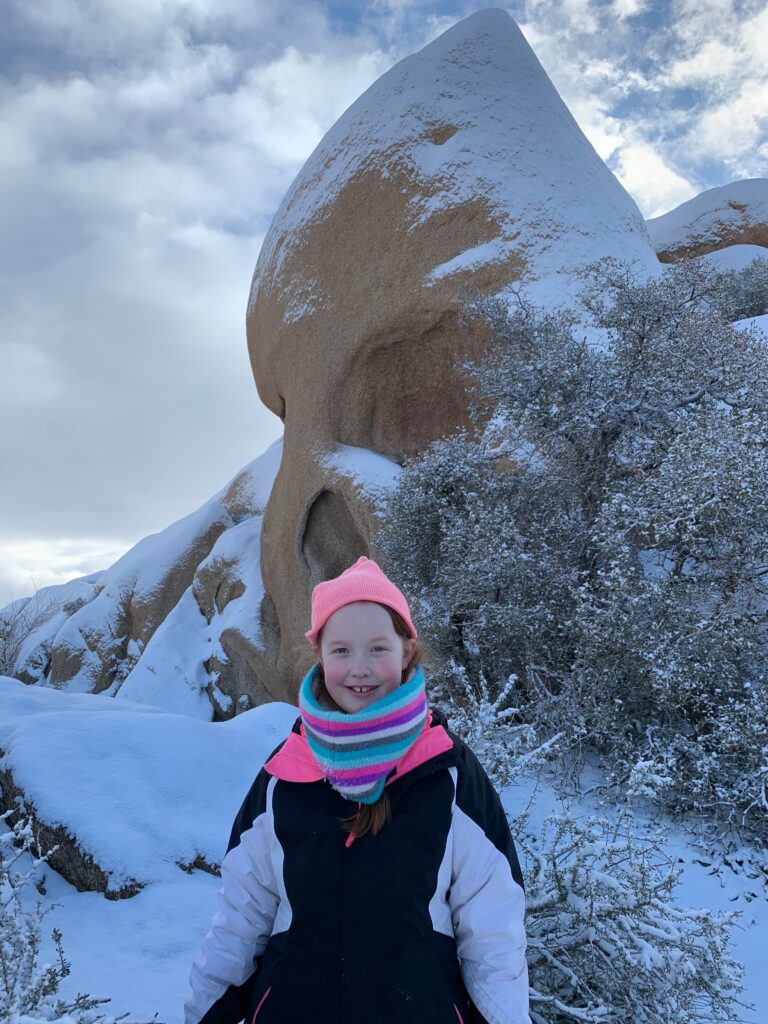
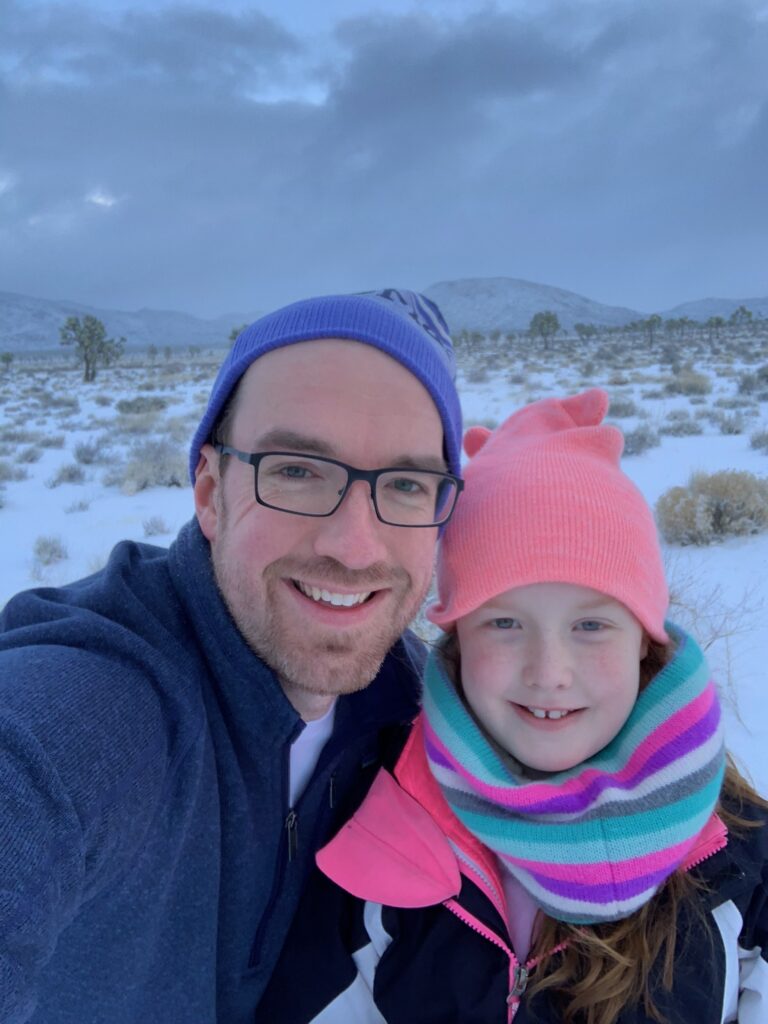
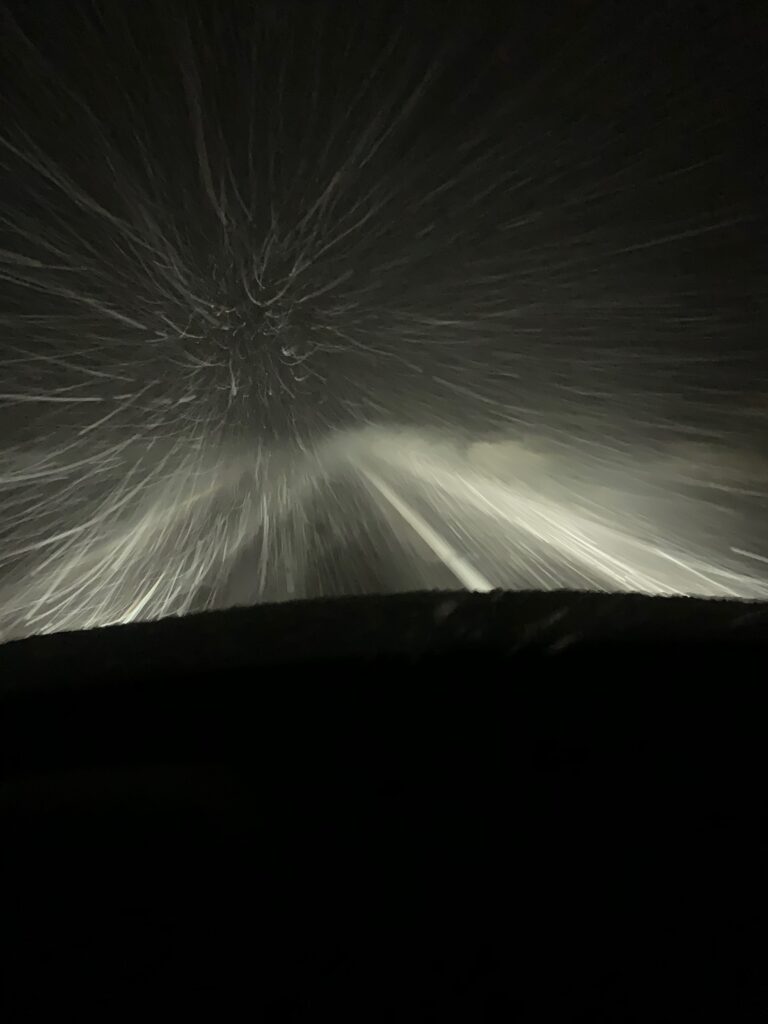
The average high this time of year is around 60F and the average low 35F however, as fate would have it we ended up being there during a massive snow storm. We heard the forecast was for snow the next morning so before dawn we headed into the park. It was already snowing and I had a morning of wonderful photography with snow covering the Joshua trees and my daughter had a morning of playing in the snow. The following few days were amazingly cold and with the high winds it was sometimes hard to stay outside for more than a few minutes. Overall it made for a very interesting and unique experience.
I think the only thing my daughter enjoyed more than the chocolate chip pancakes was playing in the snow at Skull Rock. After I took photos of the fresh undisturbed snow of course!



